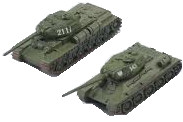By Fred Manzo
 Overview
Overview
I always liked Axis and Allies. It was one of the famous Game Master series that Milton Bradley published starting back in 1981 (the others in the series were Conquest of the Empire, Broadsides and Boarding Parties, Fortress America and Shogun). It was designed by Larry Harris Jr. and while you would never call it an overly accurate or detailed simulation of World War II, it is fun to play and it’s a lot deeper than most people think. I’d call it multi-player chess. So it was with pleasure that I recently played it again. This time I was Russia, which is always tough. No matter how well you play you must depend on your faithful Allies helping out or you’ll be double teamed and crushed. As we played with one or two new people, you guessed it, I was crushed. But it was fun anyway. But seeing that various members of our group have been familiar with this game for almost 3 decades, we’ve developed some interesting techniques on how and when to attack.
Punch Formula:
Of course, we use the old “Punch Formula,” which is well-known in the Axis and Allies community.
Modified Punch Formula
Step One remains the same:
Step Two:
They consider it an attack signal only if both numbers are over 1.00. This modification attempts to correct one of the major problems with the traditional formula, in that players must now take into attack, at least tangentially, the composition of the forces involved. While this formula is somewhat easier to use then the Standard Formula, I do find it interesting that it still would not have given an unambiguous attack signal in the situation we last looked into. However, many of us prefer what has come to be called “The Standard Formula.”
Standard Formula:
Punch:
Attackers = (3o Infantry) X (1 hit number) = (30) X (1) = 30
divided by
Defenders = (15 Tanks) X (2* hit number) = (15) X (2) = 30 which equals 30/30 or 1.00 (I.E., don’t attack just yet)
Modified Punch (step two):
Attackers numbers over Defenders number = 30 Infantry / 15 tanks = 2.00 (I.E., attack now). So, the modified Punch formula is a bit ambiguous. Perhaps you should wait a bit as step 1 said not to attack just yet and step 2 said to attack now.
Standard Formula:
Attackers = (3o Infantry) X (1 hit number + 1) = (30) X (2) = 60
divided by
Defenders = (15 tanks) X (2* hit number + 1) = (15 ) X (3) = 45 which equals 60/45 or 1.3333 (I.E., Attack now! It’s not close))
“Luckless” Analysis:
We’ll use a “luckless” analysis (a reliable but unwieldy formula that is almost never used during face-to-face play due to the length of time it requires):
During the first round we can assume that 30 Infantry rolling 30 dice will hit 1/6th of the time (as there are 6 different results and only a “1” is a hit) or 5 units are destroyed, reducing the defending tank army from 15 to 10 units. We can also assume the Tank army rolling 15 dice, which hit 1/3rd of the time (as there are still 6 different results and only a “1” or “2” is a hit) or 5 units are also destroyed, reducing the Infantry army from 30 to 25 units.
During round two the remaining 25 Infantry should hit 4 times (1/6 of 25 rounds to 4 units destroyed), reducing the defending tank army from 10 to 6 units, while the Tank army rolling 10 dice should hit 3 time (10 dice hitting 1/3 of the time), reducing the infantry army from 25 to 22 attacking units.
During round three we’ll assume the 22 Infantry will hit 4 times or so (1/6th of 22 is 3.666 and we’ll round up), reducing the tank army from 6 to 2 and the defending Tank army rolling 6 times will hit twice on average ( 1/3 of 6 rolls), reducing the infantry army from 22 to 20 attacking units.
During the fourth round, the 20 Infantry army should hit 3 times (1/6th of 20 rolls), eliminating the tank army. We can also assume the 2 Tank army will hit at most once, reducing the Infantry army from 20 to 19.
So the “weak” infantry army eliminated the “stronger” tank army rather easily and even lost fewer units in doing so. That is, the infantry lost 11 inexpensive units (11 times 3 IPCs each or 33 IPCs in replacement costs) and the Tank army lost 15 expensive units (15 times 5 IPCs each or 75 IPCs in replacement costs). In this situation, it wasn’t even close. The infantry army really should have attacked without question and that was what our Standard Formula definitely said to do. 
Conclusion:
Although the Standard Formula also has problems (especially with asymmetrical armies) it is easy to remember and doesn’t require paper & pencil in most cases. Just keep in mind that anything over 1.0 is an attack signal when dealing with medium (18-35 total units) and large scale (36+ total units) battles and anything over 1.5 is an attack signal for small (< 18 total units) battles.
Although, tiny “skirmish” battles are still sheer luck. In addition, it’s useful in determining the optimal number of units needed to take a territory. Without it, if you use too many, you run the risk of losing the excess in the inevitable counter-attack, but if you use too few you may not take the territory at all. The Standard Formula gives you a rough estimate of what’s the minimum force needed to get the job done.








